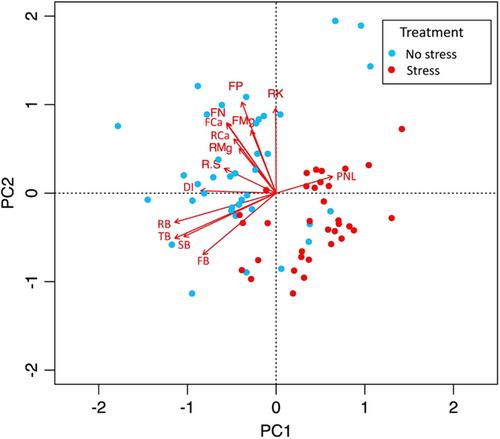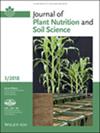Nutritional response of sugar maple seedlings to water stress under highly nitrogen-enriched soil conditions
Abstract
Background
Temperate forests of eastern North America will be increasingly affected by chronic atmospheric nitrogen deposition, elevated temperatures, and drought events that will expose trees to moisture-stressed conditions in non-nitrogen-limited soils. Yet, little is known regarding the response of sugar maple-dominated forests to moisture stress under non-nitrogen-limiting conditions.
Aims
The objective of this greenhouse study was to analyze the effects of moisture stress on the nutrition and growth of sugar maple seedlings growing on base-poor forest soils that were strongly fertilized with nitrogen.
Methods
One-year-old sugar maple seedlings were grown with and without water stress on soils from a sugar maple stand that had been fertilized for 15 years at a rate of 85 kg N ha−1 y−1.
Results
Decreased moisture availability decreased total, leaf, root and stem biomass, and root/stem ratio. Leaf concentrations of N, P, Ca, and Mg and root concentrations of K, Ca, and Mg were 6% to 23% significantly lower under stressed versus unstressed conditions despite no changes in N, P, K, and Mg concentrations in the soil. Only soil Ca concentration was negatively affected by the moisture stress treatment. Soil and leaf δ15N and the k-factor (i.e., isotopic discrimination effect of 15N-labeled sources of N between roots and soil) that was used to assess N-use efficiency of sugar maple seedlings did not differ between water stress treatments.
Conclusions
Our results indicate that decreasing root biomass of sugar maple seedlings under moisture stress in non-nitrogen-limiting situations would decrease their ability to take up nutrients that are necessary for growth and induce lower concentrations in leaves and roots. Expected severe drought events could substantially limit nutrient uptake capacity of sugar maple seedlings on sites that are subject to chronic atmospheric N-deposition, which would contribute to dieback in sugar maple stands.


 求助内容:
求助内容: 应助结果提醒方式:
应助结果提醒方式:


